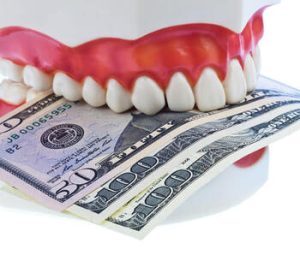Exploring Various Types of Veneers for Your Smile

In cosmetic dentistry, the allure of a flawless smile has found its remedy in the form of dental veneers. Veneers are custom-made shells designed to cover the tooth surface, providing a cosmetic solution to discoloured, chipped, or misshapen teeth. They have become a sought-after solution for those looking to address cosmetic dental issues while retaining a natural tooth appearance. Over recent years, cosmetic dentistry has become popular, with various treatments available to achieve that perfect smile. Various types of veneers have emerged, each catering to different needs and preferences. Porcelain veneers, known for their durability and natural appearance, are often favoured for their stain-resistant qualities. Unlike porcelain veneers, composite veneers offer a cost-effective solution with less tooth preparation, often making them a quick fix for minor dental imperfections. For those seeking an even less invasive option, removable veneers or Snap-On veneers provide a temporary solution without the need for enamel removal.
The world of veneers further expands with Lumineers, a brand known for requiring minimal tooth preparation, and composite resin veneers, a mid-ground solution offering a blend of aesthetics and affordability. There are also palatal veneers, typically used as a protective shield for the back of teeth suffering from dental erosion or tooth grinding. The journey towards a beautiful smile may also lead some towards opting for traditional veneers or their thinner counterparts, known as minimal prep or prep less veneers, which require minimal to no tooth reduction.
With the advent of technology, the process has become more streamlined. Dental lab technicians now employ advanced techniques to craft veneers that seamlessly blend with natural teeth. The cosmetic dentistry procedure for placing veneers involves meticulous tooth preparation, removing a thin layer of tooth enamel to accommodate the veneer. However, some types of veneers, like Lumineers veneers and prepless veneers, require less to no tooth preparation, making them a preferable choice for those wary of permanent alterations to their tooth structure.
Every type of dental veneer presents unique benefits catered to different dental needs and aesthetic desires. Whether fixing broken teeth, addressing tooth decay, or simply seeking a smile makeover, the variety in veneer materials and types offers a tailored solution.
Porcelain Veneers

Porcelain veneers stand out significantly among the assorted types of veneers flooding the cosmetic dentistry market. These finely crafted shells, adhered to the front surface of the teeth, act as a cosmetic veil, mending discoloured, chipped, or misshapen teeth. They are meticulously customised to blend seamlessly with the natural teeth, promising a natural tooth appearance that is bound to bolster one’s confidence.
The Procedure of Getting Porcelain Veneers
Acquiring porcelain veneers begins with a consultation with a dental professional. After thoroughly examining and discussing your aesthetic desires, a shade of porcelain is chosen to match your existing teeth or achieve the desired whiteness. The tooth preparation phase then follows, which involves a minor reshaping of the tooth surface and a slight enamel removal to ensure a snug fit for the veneer. Impressions of your teeth are taken and sent to the dental lab, where skilled dental lab technicians embark on crafting your veneers. Upon your next visit, the veneers are adhered to your teeth, introducing you to a transformed, beautiful smile.
Benefits of Porcelain Veneers
Regarding the benefits of porcelain veneers, their durability is a standout feature. Crafted from high-quality porcelain, these veneers resist wear and tear, serving you a flawless smile for many years. Their stain-resistant nature is another perk, keeping your smile bright even when indulging in life’s little stain-prone pleasures like coffee or wine. Moreover, their natural appearance is unparalleled, often making it impossible to tell treated teeth apart from untreated ones.
However, every rose has its thorns. The cost of porcelain veneers can be quite hefty, often deterring individuals on a tight budget. Unlike porcelain veneers, alternatives like composite resin or removable veneers come at a lower cost, making them a viable option for many. The procedure for porcelain veneers is also irreversible since it requires the removal of a small portion of tooth enamel. This factor could give pause to individuals wary of permanent alterations.
Porcelain veneers serve as an epitome of the perfect blend of science and artistry in cosmetic dentistry. While they come with drawbacks, their undeniable transformation makes them a revered choice for those yearning for a striking change in their smile. If the cost and the irreversible process are within your realm of acceptance, the timeless allure of porcelain veneers might be the cosmetic solution you seek. Before you venture down this road, a consultation with a dental professional can provide a clear lens to view if this dental restoration is the right route for your smile makeover.
Composite Resin Veneers
Diverging from the well-trodden path of porcelain veneers, composite resin veneers have emerged as a compelling choice for individuals seeking to elevate their smile. As one navigates through the types of veneers available in cosmetic dentistry, the composite variety offers a blend of aesthetics and affordability. These veneers comprise a composite resin material meticulously sculpted to mask imperfections such as discoloured, chipped, or misshapen teeth. They are revered for their natural tooth appearance, providing a harmonious blend with the existing teeth.

The Procedure of Getting Composite Veneers
The journey towards acquiring composite resin veneers begins with a consultation with a seasoned dental professional. Unlike porcelain veneers, the tooth preparation for composite resin veneers requires less tooth reduction, often with minimal to no enamel removal. This aspect is a boon for individuals wary of permanent alterations to their tooth structure. Once the tooth surface is adequately prepared, the dental professional skillfully applies, shapes, and polishes the composite resin on the tooth, achieving an immediate and visually appealing transformation.
Benefits of Composite Veneers
Amid the benefits, the cost-effectiveness of composite veneers stands tall. They present a more budget-friendly option than their porcelain counterparts, making them accessible to a broader swath of dental patients. Furthermore, the procedure is reversible, and in the rare instance of dissatisfaction, one can revert to their original dental state. This facet provides a peace of mind often craved in cosmetic dentistry treatments.
However, every dental treatment comes with its set of caveats. Composite veneers may need more durability department. Their lifespan is shorter, and they are more prone to staining over time, demanding a more rigorous dental care routine to maintain their allure. Moreover, despite the remarkable natural tooth appearance they afford, they might lack the opulent finish that porcelain veneers boast of, which could be a deal-breaker for the aesthetically discerning individual.
In the grander scheme of cosmetic dentistry, composite resin veneers present an accessible and less invasive avenue towards a beautiful smile. They promise to rectify cosmetic dental issues with lesser permanence and a lower financial outlay. Composite veneers could hold the key for those looking for a cosmetic solution that harmonises with their dental and financial circumstances. Embarking on a veneer treatment journey begins with a thorough discussion with a dental professional, a small step towards a captivating smile reflecting your essence.
Lumineers
In cosmetic dentistry, Lumineers stands out as a modern marvel, blending simplicity and aesthetic appeal. They are a type of dental veneer that aims to refine the appearance of one’s smile without the invasive procedures associated with traditional veneers. Lumineers are made from patented cerinate porcelain, famed for its strength and translucence, allowing for a natural tooth appearance that mirrors the beauty of natural teeth.
The Procedure of Getting Lumineers
Embarking on acquiring Lumineers begins with a consultation with a seasoned dental professional. Unlike porcelain veneers, Lumineers require minimal tooth preparation. There’s often no need for grinding down tooth structure or enamel removal, preserving the integrity of your natural teeth. This Lumineers facet especially appeals to individuals wary of permanent alterations to their dental framework. Following an impression of your teeth, the mould is sent to a dental lab where skilled technicians craft your custom Lumineers. Once ready, they are carefully bonded to your teeth, instantly unveiling a transformed, flawless smile.
The procedure’s minimally invasive nature rings synonymous with benefits. One significant advantage is the lack of tooth reduction required, promoting oral health and reducing the chances of tooth sensitivity post-procedure. Furthermore, the reversibility of the Lumineers procedure stands out as a remarkable benefit. Should you yearn for a return to your original dental state, it remains a viable option.

However, Lumineers come with their set of drawbacks. The thickness of Lumineers, albeit minimal, may feel unusual to some individuals. Moreover, they offer limited shade options, which might only cater to some people’s aesthetic desires, especially those seeking a precise match to their natural tooth shade or those with complex cosmetic dental issues.
In the kaleidoscope of cosmetic dentistry treatments, Lumineers emerge as a less invasive, reversible option for those yearning for a refreshed smile without the permanence associated with other veneers. They represent a beautiful escape for individuals from the shackles of dental apprehensions, ushering them into a realm where a beautiful smile is attainable with less fuss and more preservation of one’s natural dentition.
Conclusion
Navigating the various types of veneers can be intricate, highlighting the importance of professional guidance in choosing the right dental veneers for an appealing natural tooth appearance. Each veneer type, from porcelain veneers to composite resin veneers, carries unique attributes suitable for different dental needs. A thorough discussion with a dental professional ensures a well-informed choice, aligning with one’s cosmetic and oral health objectives. The journey towards a rejuvenated smile begins with a step towards expert consultation. Visit My Local Dentists to explore the most suitable veneer options for your dental needs and step closer to the captivating smile you envision.
References
https://pubmed.ncbi.nlm.nih.gov/9893514/
https://www.healthline.com/health/dental-veneers
